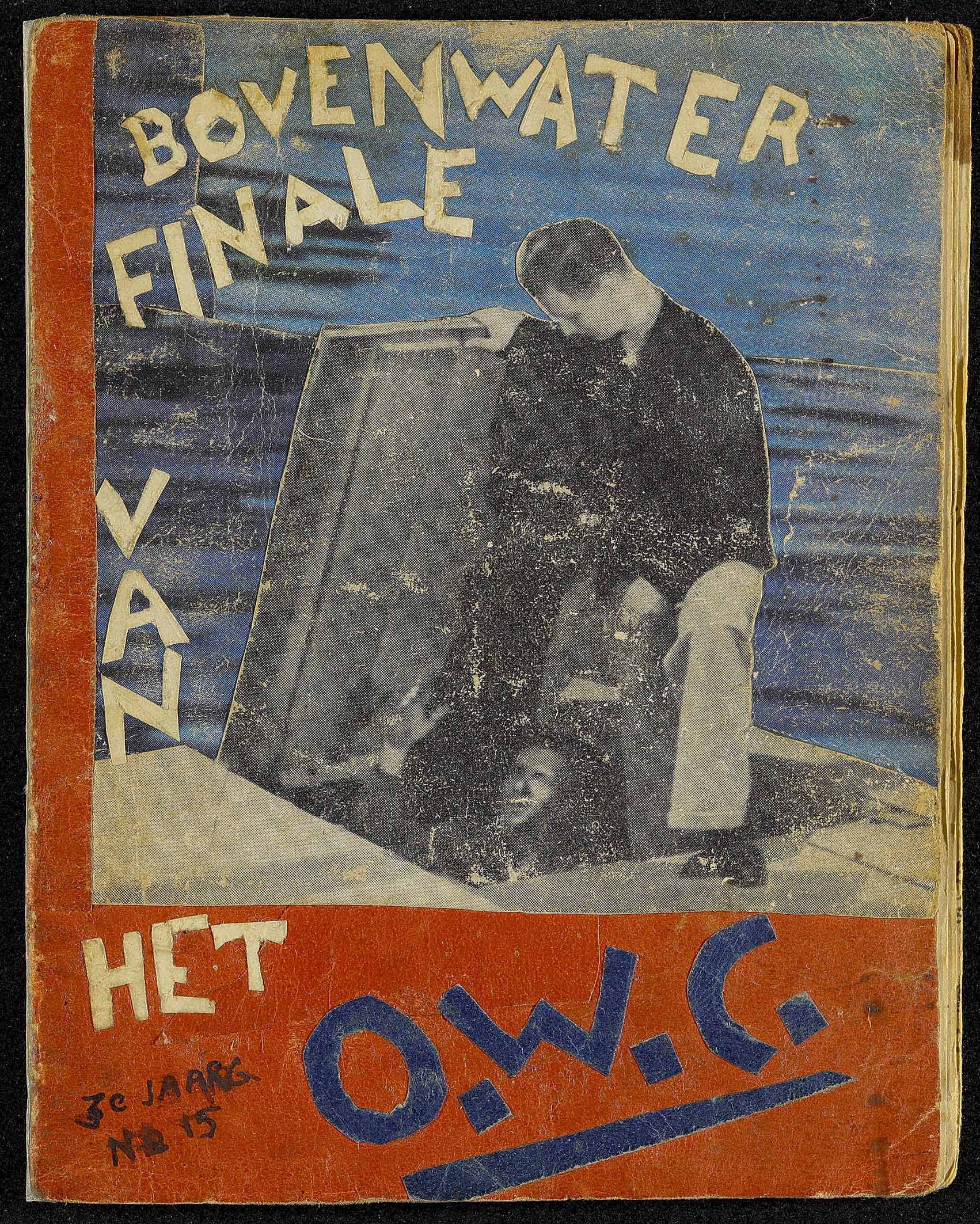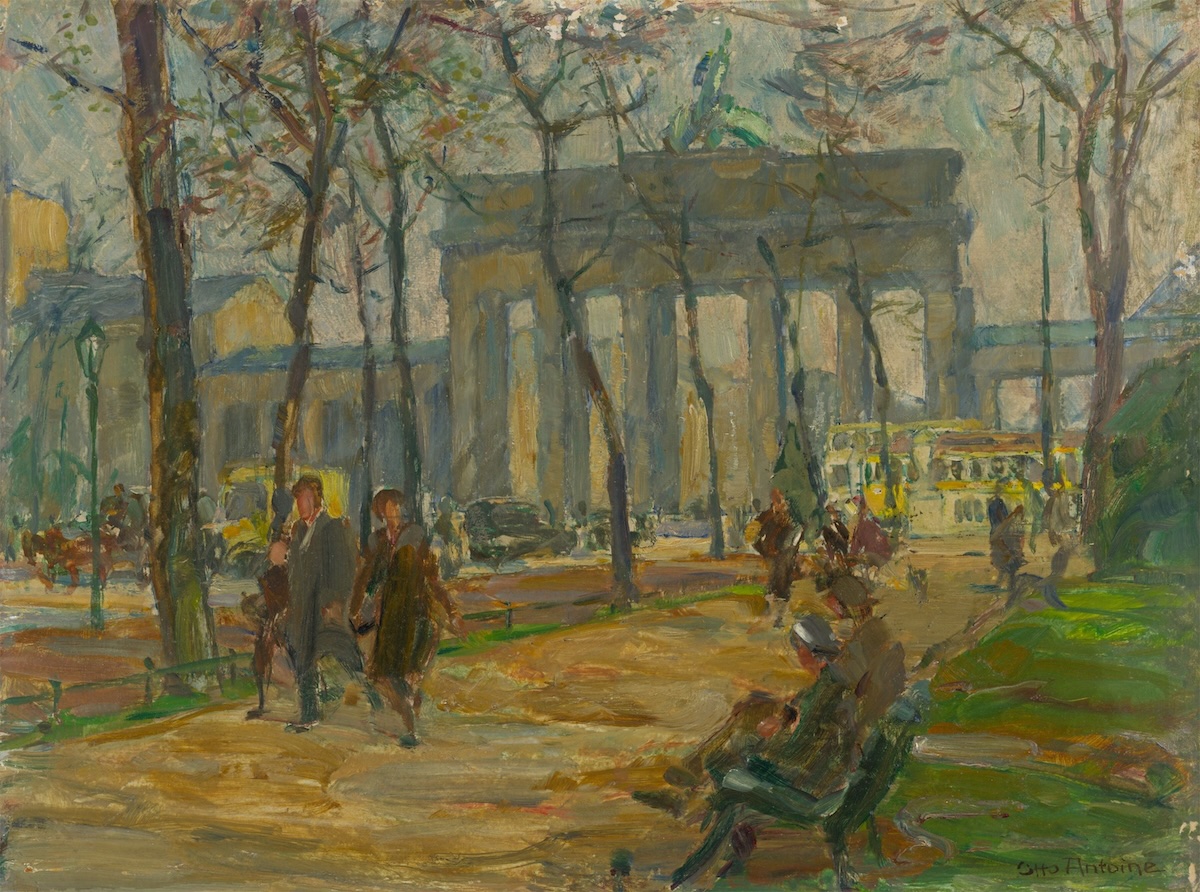art

“My verses are like dynamite”
Curt Bloch’s Het Onderwater Cabaret
Presentation by Aubrey Pomerance, Berlin (Germany)
ONLINE
VA, United States
Under threat from Nazi antisemitism, the young Jewish lawyer Curt Bloch (1908–1975) fled Dortmund for the Netherlands in 1933. He went into hiding there in 1942 and emigrated to the United States after the war. In his hiding place, from August 1943 to April 1945 Bloch produced a magazine with the telling title Het Onderwater Cabaret – “The Underwater Cabaret.” Image above: Curt Bloch, Het Onderwater Cabaret 30 Aug 1943; Jewish Museum Berlin, Convolute/816, Curt Bloch collection, loaned by the Charities Aid Foundation America thanks to the generous support of Curt Blochʼs family Week by week, Curt Bloch created small-format booklets with artfully designed covers, containing a total of 483 handwritten poems in German and [...]

George Grosz (1893-1959):
The Stick Men
Presentation by Karli Wurzelbacher, PhD, Huntington (New York)
ONLINE
VA, United States
George Grosz (American, b. Germany, 1893–1959) created the “Stick Men” series in Huntington, where he lived from 1947 until shortly before his death. Featuring hollow figures in an apocalyptic landscape, this group of watercolors offers a searing indictment of humanity following World War II, the Holocaust, and the dropping of atomic bombs on Hiroshima and Nagasaki. Grosz was an internationally renowned German-born artist who remained invested in political art following his immigration to the United States in 1933. In the “Stick Men” series, he wrestles with the emergence of Abstract Expressionism and reaffirms the ability of painting to impact society. Image above: Detail of George Grosz (American, b. Germany, 1893–1959), The Grey Man Dances, 1949. Oil on canvas. George [...]

Painted Memories of a Jewish Childhood in Poland Before the Holocaust
Presentation by Barbara Kirshenblatt-Gimblett
ONLINE
VA, United States
Lest future generations know more about how Jews died than how they lived, Mayer Kirshenblatt (1916-2009) made it his mission to remember the world of his childhood in images and words. Born in Opatów (Apt in Yiddish), Mayer left for Canada in 1934 at the age of 17. Image above: Mayer Kirshenblatt, Synagogue interior, 1991. Acrylic on canvas. Gift of the Kirshenblatt Family. Taube Family Mayer July Art Collection at POLIN Museum of the History of Polish Jews, Warsaw. He had always told his family stories about growing up in Poland before the Holocaust. After his family begged him to paint what he could remember, Mayer finally picked up his brush in 1989 at the [...]

Misunderstandings and Contradictions:
The Art and Life of Jacqueline de Jong (1939-2024)
Presentation by Curator Ariella Wolens, Fort Lauderdale (FL)
ONLINE
VA, United States
In this virtual talk, curator Ariella Wolens presents the late Dutch artist, Situationist, and Pataphysician Jacqueline de Jong (1939-2024). Born into a Jewish family in Enschede, Netherlands, De Jong’s infancy was spent in exile in Switzerland; she and her mother narrowly escaped deportation to Sobibor after being taken in by the resistance. For the rest of her life, she remained universally empathic, and chose art as her own form of resistance. Image above: Jacqueline de Jong, Naufrage en Mediterranée (Border Line), 2020. Oil and nepheline gel on canvas, 35 3/8 x 47 1/4 in / 90 x 120 cm. BPS22, Musée d'art de la Province de Hainaut, Belgium. Courtesy the artist’s estate and Ortuzar Projects, New York. © 2024 [...]

Otto Antoine (1865-1951): “The Painter of Berlin” between Compliance and Defiance
Presentation by Kathleen Langone and Q&A with Jacquelyn Delin McDonald
ONLINE
VA, United States
Kathleen Langone speaks about the German born painter Otto Antoine (1865-1951), followed by a conversation with Jacquelyn Delin McDonald from the University of Texas at Dallas. Image above: Otto Antoine, Brandenburg Gate, 1928. Oil on cardboard Antoine displayed an early artistic talent but, due to economic circumstances, started a long-term career as a civil servant, initially as a clerk at a local post office. His drawing abilities were soon recognized, and he increasingly was used as a painter, engraver and designer of stamps for the German postal service. They also sent him to many far-flung places outside of Germany (such as Africa) to paint bucolic landscapes of those countries, which were used to promote their [...]

Sculpting a Life: Chana Orloff during Occupation, Escape, Exile, Return (1938-1949)
Presentation by Paula J. Birnbaum, San Francisco (CA)
ONLINE
VA, United States
This talk analyzes the Ukrainian born French sculptor Chana Orloff’s (1888-1968) perseverance and tremendous sacrifices during World War II, when the Nazis came to her studio, stole much of her work, and brutally vandalized what they left behind. Her tenacity led to her narrow and difficult escape from Paris first to the south of France and then on to Geneva with her young adult son, who was disabled. The presentation explores how Orloff managed her life and career under Nazi Occupation in Paris for two years, when she was among the many French and foreign-born Jews banned from public spaces, forced to observe a curfew and wear the yellow armband with the Star of David and the word “Juif” [...]

LOVE AND BETRAYAL – The Expressionist Fritz Ascher from New York Private Collections
November 8, 2024 – March 2, 2025
Haus der Graphischen Sammlung, Freiburg, Germany
Haus der Graphischen Sammlung
Salzstraße 34, Freiburg im Breisgau, Germany
The late Expressionist artist Fritz Ascher (1893-1970) survived two world wars and persecution by the National Socialist regime. A close observer of the horrors of World War I and revolutionary unrest, he turned to Christian spiritual themes, which he radically reinterpreted. In intimate drawings, he dealt with the theme of love and betrayal from 1916 onward, both in his exploration of the crucifixion theme and with the figure of Bajazzo in the tragicomic opera "I Pagliacci." Ascher's strong and unique artistic voice is evident not only in his artwork, but also in his poems. These were written when he was no longer allowed to work under National Socialism because of his Jewish roots and as a representative of modernism, [...]

Fritz Ascher in Berlin – eine Spurensuche
Kurzvortrag und Führung von Rachel Stern, New York
Augustinermuseum, Haus der Graphischen Sammlung, Freiburg
Augustinermuseum
Augustinerplatz, Freiburg im Breisgau
Der spätexpressionistische Künstler Fritz Ascher (1893-1970) überlebte zwei Weltkriege und die Verfolgung durch das nationalsozialistische Regime. Als aufmerksamer Beobachter der Schrecken des Ersten Weltkriegs und der revolutionären Unruhen wandte er sich christlich-spirituellen Themen zu, die er radikal neu interpretierte. In intimen Zeichnungen beschäftigte er sich ab 1916 mit dem Thema Liebe und Verrat, sowohl in seiner Auseinandersetzung mit dem Kreuzigungsthema als auch mit der Figur des Bajazzo in der tragikomischen Oper „I Pagliacci“. Kurzvortrag und Führung von Rachel Stern zeigen den Künstler in seinem sozialen und politischen Umfeld. Image above: Fritz Ascher, Im Wald, um 1919. Weisse Gouache und schwarze Tusche über Aquarell und Bleistift auf Papier, 34 x 32,2 cm © Bianca Stock The late expressionist [...]

Liebe und Verrat: Fritz Ascher
Kurator Erik Riedel im Gespräch mit Rachel Stern
Jüdisches Museum Frankfurt (Germany)
Jewish Museum Frankfurt
Bertha-Pappenheim-Platz 1, Frankfurt am Main, Germany
Der Maler, Grafiker und Dichter Fritz Ascher (1893-1970) wurde bereits als 16-Jähriger von Max Liebermann an die Akademie in Königsberg empfohlen. Ab 1913 gehörte er zu den gefragten Malern in Berlin. Er war ein genauer Beobachter seiner Zeit; die Urkatastrophe des Ersten Weltkriegs und die revolutionären Unruhen in Berlin führten ihn zu christlichen und mystischen Themen, die er radikal neu interpretierte. Nach 1933 erhielt Ascher als Jude Berufsverbot. Während der Pogrome am 9./10. November 1938 wurde er verhaftet und im Konzentrationslager Sachsenhausen und im Potsdamer Gestapo-Gefängnis interniert. Die Schoa überlebte er ab 1942 versteckt in einem Keller in Berlin-Grunewald. Während dieser einsamen Jahre verfasste er Gedichte. Als Künstler fand Ascher nach 1945 seinen ganz eigenen Stil. Angeregt vom nahe [...]

Felka Platek – Artist and Companion of the Painter Felix Nussbaum
Presentation by Anne Sibylle Schwetter, Osnabrück (Germany)
ONLINE
VA, United States
Felka Platek (1899 Warsaw – 1944 Auschwitz) came to Berlin from Warsaw in the early 1920s to become a painter. In 1932 she followed her friend and later husband Felix Nussbaum (1904 Osnabrück – 1944 Auschwitz) to Italy. In 1935 they decided to go into exile in Belgium. However, neither of them could escape persecution by the Nazis. They were captured in their hiding place in Brussels on June 21, 1944 and murdered in Auschwitz shortly afterwards. Image above: Felka Platek, Self-portrait in front of an open window, around 1940. Gouache on drawing paper, 65 x 49.7 cm. Felix-Nussbaum-Haus at Museumsquartier Osnabrück, on permanent loan from the Felix Nussbaum Foundation, photo © Felix-Nussbaum-Haus Osnabrück Anne [...]


